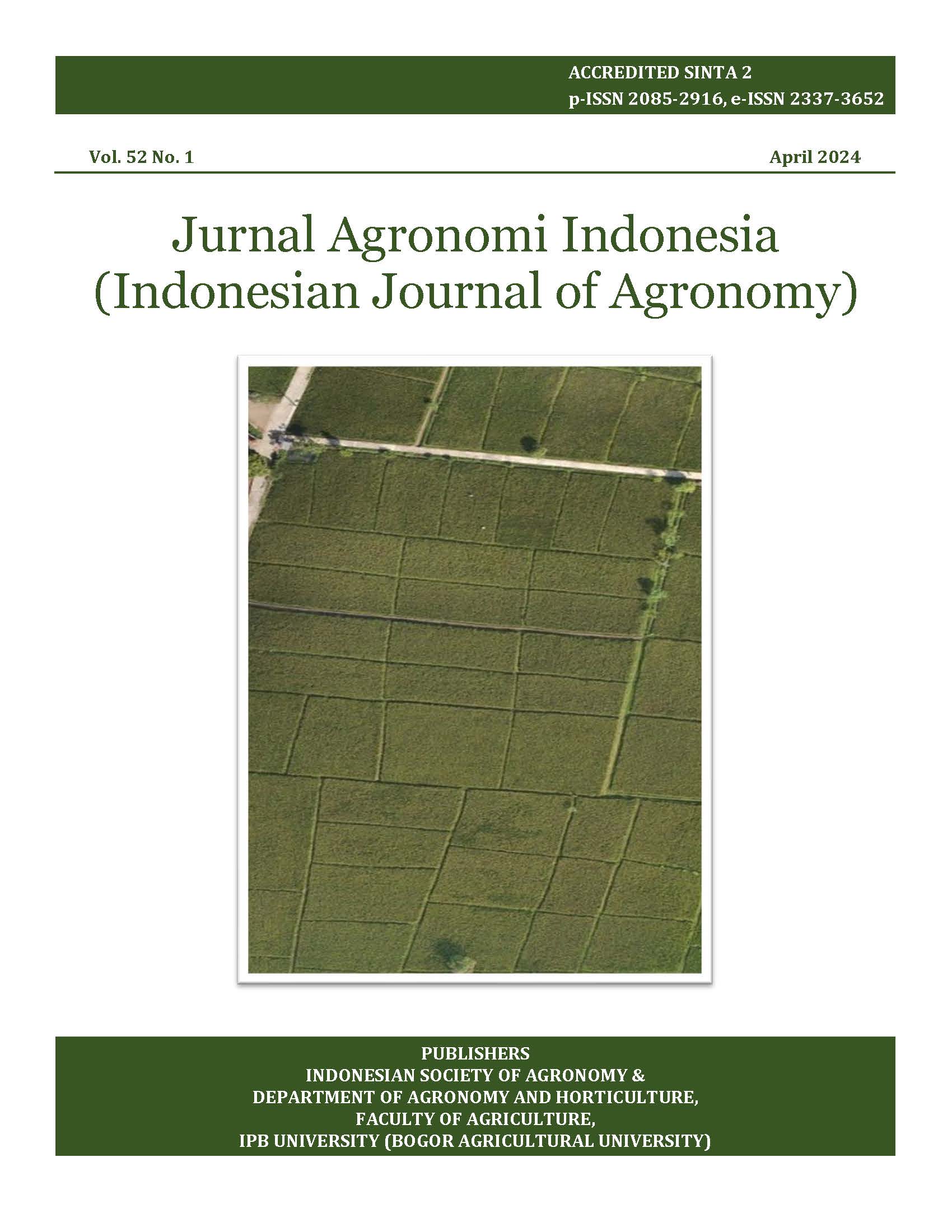Optimization of nutmeg (Myristica fragrans) grafting using multiple rootstock and scion types
DOI:
https://doi.org/10.24831/jai.v52i1.53185Abstract
The rootstock number and scion types can be used to optimize grafting success. This study aimed to determine the effect of rootstock number, scion type, and its interaction on the success of nutmeg grafting. The research was conducted at the Seed Breeding Site in Layeni Village, Central Maluku Regency, Maluku. The research started in November 2022 and ended in August 2023. The experiment used a two-factor completely randomized design. The first factor was the rootstock number, i.e., single, double, and triple rootstocks. The second factor was the scion type, i.e., Myristica fragrans Houtt, Myristica argentea Warb, and Myristica sp. The 9 treatment combinations were replicated six times, resulting in a total of 54 experimental units. The result of the study concluded that grafting success was influenced by the rootstock number and the scion types, and there was no interaction between rootstock and scion. The highest success was achieved by using a single rootstock with a success rate of 60%. The use of Myristica sp. scions gave the highest grafting percentage of 76.66%. Successful nutmeg grafting was characterized by the presence of a fusion between the rootstock and the scion, based on anatomical observations. Failed nutmeg grafting was characterized by the absence of fusion between rootstock and scion. The rootstock number and scion type affected shoot emergence time, linked stem diameter, shoot length, and leaf number, while the scion type affected the shoot number. Double rootstock tended to have higher parameters than single and triple rootstock for shoot emergence and leaf number, but the number of failed grafting was still challenging.
Keywords: anatomical; double rootstock; compatibility; incompatibility; linked stem diameter













